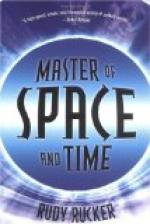Wheatstone also devised an instrument for increasing feeble sound, which he called a microphone. This consisted of a pair of rods to convey the sound vibrations to the ears, and does not at all resemble the modern electrical microphone. Other inventions in the transmission and reproduction of sound followed, and he devoted no little attention to the construction of improved musical instruments. He even made some efforts to produce a practical talking-machine, and was convinced that one would be attained. At thirty-two he was widely famed as a scientist and had been made a professor of experimental physics in King’s College, London. His most notable work at this time was measuring the speed of the electric current, which up to that time had been supposed to be instantaneous.
By 1835 Wheatstone had abandoned his plans for transmitting sounds through long rods of metal and was studying the telegraph. He experimented with instruments of his own and proposed a line across the Thames. It was in 1836 that Mr. Cooke, an army officer home on leave, became interested in the telegraph and devoted himself to putting it on a working basis. He had already exhibited a crude set when he came to Wheatstone, realizing his own lack of scientific knowledge. The two men finally entered into partnership, Wheatstone contributing the scientific and Cooke the business ability to the new enterprise. The partnership was arranged late in 1837, and a patent taken out on Wheatstone’s five-needle telegraph.
In this telegraph a magnetic needle was located within a loop formed by the telegraph circuit at the receiving end. When the circuit was closed the needle was deflected to one side or the other, according to the direction of the current. Five separate circuits and needles were used, and a variety of signals could thus be sent. Five wires, with a sixth return wire, were used in the first experimental line erected in London in 1837. So in the year when Morse was constructing his models Wheatstone and Cooke were operating an experimental line, crude and impracticable though it was, and enjoying the sensations of communicating with each other at a distance.
In 1841 the telegraph was placed on public exhibition at so much a head, but it was viewed as an entertaining novelty without utility by the public at large. After many disappointments the inventors secured the cooperation of the Great Western Railroad, and a line was erected for a distance of thirteen miles. But the public would not patronise the line until its utility was strikingly demonstrated by the capture of the “Kwaker.”




